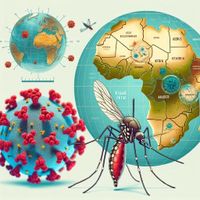Senegal is grappling with its deadliest outbreak of Rift Valley Fever (RVF) in decades, with 17 deaths and 119 reported cases as of October 10, 2025, according to the country’s health ministry and reporting from the Associated Press. The viral disease, which primarily affects livestock, has struck hardest in the northern regions of Senegal—an area known for its thriving cattle and sheep populations. This rare surge in human infections is raising alarm among public health officials and communities alike, as the country faces challenges not seen since the late 1980s.
Dr. Boly Diop, the head of RVF surveillance at Senegal’s health ministry, told local media, “This is the first time Senegal has counted so many people affected.” The outbreak was officially declared on September 21, 2025, and the numbers have only continued to climb since then, with most cases clustered in the livestock-producing north. The last time Senegal faced an outbreak of this magnitude was during 1987-88, when over 200 people died in Senegal and neighboring Mauritania, as reported by the World Health Organization (WHO).
Rift Valley Fever is a viral disease that mainly targets livestock such as cattle, sheep, and goats. But humans are not immune. According to the WHO, people typically become infected through mosquito bites or by coming into contact with the blood, body fluids, or tissues of infected animals—a risk that is especially high during slaughter, animal births, veterinary procedures, or disposal of carcasses. The Africa Centres for Disease Control and Prevention (Africa CDC) echoes this, noting that herders, farmers, slaughterhouse workers, and veterinarians are among those most at risk.
Most human infections are mild or even asymptomatic, but the disease can take a dangerous turn. Severe cases can result in eye damage, brain swelling, or a hemorrhagic fever with a case fatality rate of up to 50%, according to the WHO. “Severe cases take several forms, including an ocular form that can cause loss of vision and a haemorrhagic form that has a 50% case fatality rate,” the WHO has stated. These complications underscore the seriousness of the outbreak and the critical need for swift intervention.
Efforts to control the outbreak have focused on two fronts: vaccinating livestock and reducing mosquito exposure. Both strategies are essential, but neither is easy to implement in regions where resources are stretched thin and awareness is low. The WHO emphasizes the importance of animal vaccination campaigns and mosquito control measures as the best ways to prevent further outbreaks. However, the current response in Senegal has been hampered by “low community awareness, a weak early warning system and late detection of cases,” according to Africa CDC.
Climate change is playing a significant role in the increasing frequency and severity of RVF outbreaks across Africa. Dr. Merawi Aragaw Tegegne, an epidemiologist with the Africa CDC, explained during a press briefing, “It has been becoming more frequent these days across Africa, and these various diseases are closely related with climate change and extreme weather events.” He added, “If you see torrential rain with quick floods, then sunny days, expect RVF in the coming days with favorable conditions for the vectors.” The vectors in question are mosquitoes, which thrive in such fluctuating weather patterns. Heavy rains followed by sunny spells create ideal breeding grounds for these insects, leading to spikes in both animal and human infections.
RVF has been endemic in northern Senegal since the 1980s, but its impact has grown more pronounced in recent years. The current outbreak, while shocking in its scale, is part of a broader trend seen across the continent. Past major outbreaks have occurred not only in Senegal and Mauritania, but also in Kenya and Somalia in 1998, where over 470 people died, and in Saudi Arabia and Yemen in 2000, marking the virus’s first appearance outside Africa and resulting in more than 200 deaths, according to the Associated Press.
Despite the gravity of the situation, there is no evidence of human-to-human transmission of RVF. The WHO and Africa CDC both confirm that humans contract the virus exclusively through vectors such as mosquitoes or by handling infected animal material. This means that controlling the outbreak hinges on breaking the chain of transmission between animals and people—a task made more urgent by the region’s reliance on livestock for both economic and nutritional needs.
Those on the front lines of this crisis are often the most vulnerable. Herders, farmers, and slaughterhouse workers face daily risks as they tend to animals, assist in births, and process meat. The virus can be present in the blood, tissues, and even the milk of infected animals, making routine tasks dangerous. The WHO warns that transmission to humans usually occurs during activities like slaughter, animal births, or veterinary work.
One of the most pressing challenges is raising public awareness. Many communities in northern Senegal have little knowledge of RVF, its symptoms, or how it spreads. This lack of information, combined with limited access to healthcare and diagnostic facilities, has contributed to the delayed detection of cases and a slower response from authorities. As Dr. Diop noted, “This is the first time Senegal has counted so many people affected,” highlighting the unusual nature of the current outbreak and the need for improved surveillance and communication.
International agencies and local health officials are working to ramp up their response, but progress is slow. Vaccination campaigns for livestock are underway, and efforts to reduce mosquito populations are being intensified. Still, the region’s vast open spaces and the mobility of both people and animals make containment a formidable task. The Associated Press reports that preventing animal outbreaks through vaccination and reducing mosquito exposure are key strategies recommended by the WHO.
Looking beyond Senegal, the rise in RVF cases is a warning sign for the rest of Africa—and potentially the world. The 2000 outbreak in Saudi Arabia and Yemen demonstrated that the virus can cross continents, especially as global trade and climate patterns shift. Experts caution that without significant investment in surveillance, vaccination, and public education, future outbreaks could be even more deadly and widespread.
For now, Senegal’s health authorities are urging vigilance. They are calling on communities to report unusual illnesses in both humans and animals, to take precautions when handling livestock, and to support efforts to control mosquito populations. As the world watches, Senegal’s experience serves as a sobering reminder of the interconnectedness of human, animal, and environmental health—and the urgent need to address the root causes of emerging infectious diseases.
As the rainy season gives way to sunnier days in northern Senegal, the coming weeks will be critical in determining whether the outbreak can be contained or if it will escalate further. For the families and communities already affected, the hope is that lessons learned from past outbreaks—and the swift action of today’s health workers—will help stem the tide of this deadly disease.




